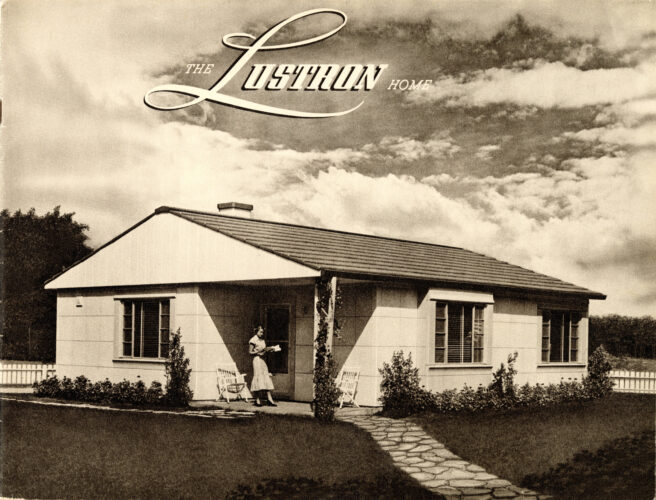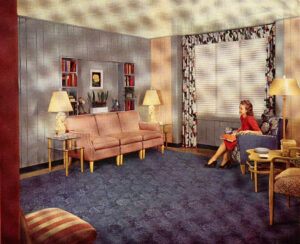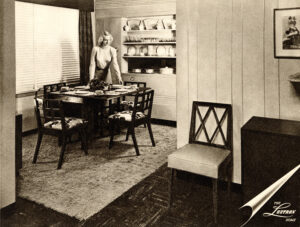The Lustron Home: An Ohio-produced solution to the mid-century housing crisis

The Lustron Corporation was founded by Carl G. Strandlund of the Chicago Vitreous Enamel Product Company, who originally planned to produce prefabricated gas stations. However, he was unable to secure government funding in the face of the housing crisis that followed World War II. The Great Depression and then the war had slowed the construction of new houses for almost two decades. After the war, young soldiers returning home were eager to settle down, buy a house, and start a family. This sudden increase in demand for housing resulted in a massive shortage. The subsequent building boom resulted in many innovations, including the development of the suburbs as we think of them today and, of course, the Lustron Home.

The Lustron Home was designed to be a starter home ideal for first-time homebuyers and less expensive than homes built using conventional construction methods. The original model was just over 1,000 square feet with 2 bedrooms, 1 bathroom, a living room, dining room, kitchen, and utility room. Additional models were eventually introduced, including a 3-bedroom option, as well as additions such as garages and breezeways. The houses were made of enameled steel and advertised as being fireproof, practically maintenance-free, and resistant to pests such as termites and rats. The homes would be shipped on custom-built trucks and assembled by local contractors in 3 days, which saved not only time, but also money in the form of labor costs.

Although prefabricated homes had been produced in the past, the Lustron Home was considered a great leap forward in the viability and desirability of mass-produced housing. The Lustron Corporation estimated that the homes could be fully assembled and move-in ready in 3 days. They originally planned to produce 30,000 homes in 1946 and to ramp up production to 400 homes per day by the end of 1947. Unfortunately, those lofty goals were never reached. Banks were hesitant to finance prefabricated homes, and due to their novel construction, the homes did not comply with the local building codes in many areas. Assembly often took longer than expected, driving up construction costs enough to rival the cost of traditional construction. In an attempt to increase sales, the Lustron Corporation shifted their focus from selling to individual homeowners to selling large numbers of homes to developers and even contracting with the military, but they were never able to sell enough homes to break even. The company went bankrupt in 1950. By the time they went out of business, just under 2,500 Lustron homes had been produced.
Thank you to Katy Scullin, Ohio Memory Program Coordinator at the Ohio History Connection, for this week’s post!



Leave a Reply
You must be logged in to post a comment.